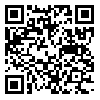BibTeX | RIS | EndNote | Medlars | ProCite | Reference Manager | RefWorks
Send citation to:
URL: http://jhsw.tums.ac.ir/article-1-5373-en.html
2- Assistant Professor, School of Civil and Environmental Engineering, Amirkabir University of Technology, Tehran, Iran ,
3- Assistant Professor, School of Environment, Tehran University, Tehran, Iran
Introduction: Leakage from process equipment and the entrance of flammable fluids to surrounding atmosphere may cause flammable gas cloud. The coincidence of flammable gas cloud with ignition source could make flash fire or vapor cloud explosion that cause injury and fatality. The concept of reduction of confluence of flammable gas cloud and potential sources of ignition is known as hazardous area classification. Several standards have provided methods regarding hazardous area classification; however, of the disadvantages of them are lack of an accurate determination of hazardous areas due to potential leakage sources which is because of low flexibility in process condition variation and equipment layout and also not considering effect of weather conditions and cumulative effects of release sources.
Method: In this paper, risk-based hazardous area classification is optimized using parameters such as the number of influencing release sources and weather condition probabilities. In this method, the determining factor of hazardous area boundary is the probability of acceptable ignition for every specific location. This probability is calculated using quantitative risk assessment with PHAST RISK software version 6.7 on the gas boosting unit of a gas refinery as a case study.
Result: The results of this method showed the full dependency of hazardous area boundary to cumulative effects of potential sources of release and the prevailing wind direction and it also demonstrated that the suggested optimized method can consider wind direction probabilities and cumulative effects of potential sources of release in risk-based hazardous area classification calculation.
Conclusion: Comparing the results of this method with the usual method determines that this method has some advantages such as considering all sources of release and cumulative sources of release and considering wind direction probabilities in determining boundary of zone 2 which makes the hazardous area classification very precise and flexible.
Received: 2016/04/2 | Accepted: 2016/04/2 | Published: 2016/04/2
| Rights and permissions | |
 |
This work is licensed under a Creative Commons Attribution-NonCommercial 4.0 International License. |





